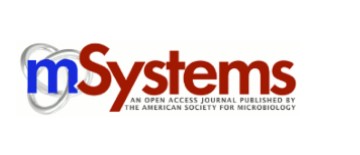|
Autors/es
Delépine, Baudoin; Gil López, Marina; Carnicer, Marc ; Vicente, Cláudia M.; Wendisch, Volker F.; Heux, Stéphanie ; Vicente, Cláudia M.; Wendisch, Volker F.; Heux, Stéphanie
|
Abstract
Bacillus methanolicus MGA3 is a thermotolerant and relatively fast-growing methylotroph able to secrete large quantities of glutamate and lysine. These natural characteristics make B. methanolicus a good candidate to become a new industrial chassis organism, especially in a methanol-based economy. Intriguingly, the only substrates known to support B. methanolicus growth as sole sources of carbon and energy are methanol, mannitol, and, to a lesser extent, glucose and arabitol. Because fluxomics provides the most direct readout of the cellular phenotype, we hypothesized that comparing methylotrophic and nonmethylotrophic metabolic states at the flux level would yield new insights into MGA3 metabolism. In this study, we designed and performed a 13C metabolic flux analysis (13C-MFA) of the facultative methylotroph B. methanolicus MGA3 growing on methanol, mannitol, and arabitol to compare the associated metabolic states. On methanol, results showed a greater flux in the ribulose monophosphate (RuMP) pathway than in the tricarboxylic acid (TCA) cycle, thus validating previous findings on the methylotrophy of B. methanolicus. New insights related to the utilization of cyclic RuMP versus linear dissimilation pathways and between the RuMP variants were generated. Importantly, we demonstrated that the linear detoxification pathways and the malic enzyme shared with the pentose phosphate pathway have an important role in cofactor regeneration. Finally, we identified, for the first time, the metabolic pathway used to assimilate arabitol. Overall, those data provide a better understanding of this strain under various environmental conditions.
|

WoS
Scopus
Altmetrics
 
|
